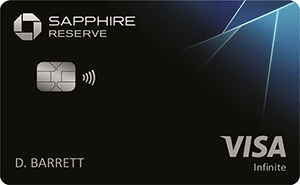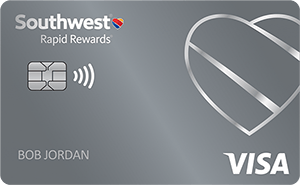Visiting Australia? Consider Travel Insurance
Look to travel credit cards first, but an additional insurance policy could round out your coverage.

Many, or all, of the products featured on this page are from our advertising partners who compensate us when you take certain actions on our website or click to take an action on their website. However, this does not influence our evaluations. Our opinions are our own. Here is a list of our partners and here's how we make money.
Now open to tourists after two years of pandemic-related closures, Australia is back on many travelers’ wish lists, and for good reason. Whether you’re interested in surfing on the Gold Coast, taking a road trip through the Outback or diving along the Great Barrier Reef, there are a lot of options to consider. But with so many adventurous — and potentially dangerous — activities, you may also want to think about purchasing travel insurance.
Let’s take a look at the different types of travel insurance for Australia, which credit cards provide complimentary coverage and other ways you can acquire insurance for added peace of mind.
Different types of travel insurance
A must-have for many, travel insurance can help cover unexpected costs related to travel mishaps, medical incidents or evacuations. However, not all travel insurance is created equal. There are a variety of types available for every kind of situation, and you’ll need to do some research to understand what’s worth purchasing and what might not be necessary.
Here are some common types of travel insurance:
Trip cancellation insurance. Used to recoup costs when you cancel a trip due to something unanticipated, like a medical issue.
Trip interruption insurance. Reimburses you for travel costs when you need to cut a trip short and return home unexpectedly.
Baggage loss insurance. Provides reimbursement when your baggage is lost, damaged or stolen.
Emergency evacuation insurance. Covers costs related to evacuating you to a different location, either for medical or safety reasons.
Travel medical insurance. Used to cover medical costs while traveling, either as a primary or secondary insurer, depending on the type of coverage you purchase.
Cancel for Any Reason insurance. A supplemental insurance that provides partial reimbursement of nonrefundable travel costs when you cancel a trip for any reason.
Rental car insurance. Covers costs related to damage or repair of a rental vehicle. This can be especially useful when renting a car in another country.
Accidental death insurance. Similar to life insurance, this coverage provides payment to a person of your choosing in case of death while you’re traveling.
You may also want to consider finding insurance that covers COVID quarantine costs. Not all policies include this coverage, so you’ll want to be sure it’s included if it’s important to you.
» Learn more: The best travel insurance companies, according to Nerds
Do you need travel insurance for Australia?
While it’s not required for entry, it may be a good idea. Travel insurance can come in useful just about anywhere, especially because it’s difficult to anticipate things like travel delays and accidents.
If you’re fairly confident about your travel plans, you may be comfortable with the insurance provided by your credit cards, though be aware that they may have lower limits than you’d like.
Otherwise, purchasing a travel insurance policy is always an option. Keep in mind that rates will vary according to your travel destination, dates of travel, ages and total trip cost.
Which credit cards offer Australia travel insurance?
Even if you’ve decided not to buy travel insurance, you may already have some coverage. Plenty of travel cards include some form of complimentary travel insurance, though the types — and limits — you receive will vary depending on which card you hold.
Many Chase credit cards offer primary rental car insurance, which will cover you in the event of an accident without needing to involve your personal auto insurance company. You’ll need to decline the rental car company’s coverage and pay with your eligible Chase card.
You can find trip delay insurance, emergency medical evacuation, lost baggage coverage and more among the different protections offered by these cards. Here are some of the more common travel cards that provide complimentary travel insurance.
The Platinum Card® from American Express. Terms apply.
Capital One Venture X Rewards Credit Card. (Benefits may change over time.)
You’ll want to read each card’s benefits guide very carefully before deciding which card to use. For example, both the The Platinum Card® from American Express and the Chase Sapphire Reserve® offer lost luggage insurance. Terms apply.
However, insurance from the The Platinum Card® from American Express only applies in the event that you’ve either paid for the full fare with your AmEx card or have redeemed your AmEx points for the flight. Using your card to pay the taxes and fees on an award flight you’ve booked elsewhere — such as redeeming Delta SkyMiles for your flight — does not mean that you’ll receive insurance coverage benefits. Terms apply.
This is in contrast to the Chase Sapphire Reserve®, whose lost luggage benefit is much more generous. In the event that your luggage is lost, you need only have paid the remainder of the charges for the flight after redeeming reward miles, points, coupons or other certificates. This means that charging just the taxes and fees on your card renders you eligible for benefits.
Aside from American Express and Chase cards, you may also want to consider the Capital One Venture X Rewards Credit Card.
Capital One’s offering includes a plethora of travel insurance benefits, including primary rental car insurance, travel accident insurance, trip cancellation and interruption insurance, lost luggage reimbursement, trip delay reimbursement, travel and emergency assistive services and more. Of course, in order to qualify for these benefits, you’ll need to have charged the trip to your card. Benefits may change over time.
» Learn more: The best credit cards with travel insurance
Other ways to get travel insurance
Even if your card provides complimentary travel insurance, you may also want to consider acquiring an additional policy — especially if you’re planning on some of the more adventurous activities you’ll find within Australia, such as camping in the Outback.
Health insurance benefits provided by credit cards such as the Chase Sapphire Reserve® max out at relatively low levels, which may mean you end up paying out of pocket in the event of an emergency.
If you’re looking for a supplemental policy, you’ll want to check quotes from a variety of providers. You can do this manually, but websites such as Squaremouth will compare multiple policies at once, making it much easier to peruse offerings. You can also filter your search according to the type of coverage you’d like.
» Learn more: Is travel insurance worth it?
If you want to get travel insurance for Australia
Travel insurance can provide peace of mind to the wary traveler. Whether or not you’re interested in purchasing travel insurance, a variety of credit cards offer complimentary coverage for incidents such as trip delays, emergency medical care, rental car collisions and lost luggage.
Otherwise, you may want to consider buying an additional policy to ensure that you’re covered. If this is what you’re looking to do, make sure to acquire quotes from a variety of providers in order to find the best deal possible.
Insurance Benefit: Trip Delay Insurance
Up to $500 per Covered Trip that is delayed for more than 6 hours; and 2 claims per Eligible Card per 12 consecutive month period.
Eligibility and Benefit level varies by Card. Terms, Conditions and Limitations Apply.
Please visit americanexpress.com/benefitsguide for more details.
Underwritten by New Hampshire Insurance Company, an AIG Company.
Insurance Benefit: Baggage Insurance Plan
Baggage Insurance Plan coverage can be in effect for Covered Persons for eligible lost, damaged, or stolen Baggage during their travel on a Common Carrier Vehicle (e.g., plane, train, ship, or bus) when the Entire Fare for a ticket for the trip (one-way or round-trip) is charged to an Eligible Card. Coverage can be provided for up to $2,000 for checked Baggage and up to a combined maximum of $3,000 for checked and carry-on Baggage, in excess of coverage provided by the Common Carrier. The coverage is also subject to a $3,000 aggregate limit per Covered Trip. For New York State residents, there is a $2,000 per bag/suitcase limit for each Covered Person with a $10,000 aggregate maximum for all Covered Persons per Covered Trip.
Eligibility and Benefit level varies by Card. Terms, Conditions and Limitations Apply.
Please visit americanexpress.com/benefitsguide for more details.
Underwritten by AMEX Assurance Company.
For Capital One products listed on this page, some of the benefits may be provided by Visa® or Mastercard® and may vary by product. See the respective Guide to Benefits for details, as terms and exclusions apply.
How to maximize your rewards
You want a travel credit card that prioritizes what’s important to you. Here are some of the best travel credit cards of 2025:
Flexibility, point transfers and a large bonus: Chase Sapphire Preferred® Card
No annual fee: Wells Fargo Autograph® Card
Flat-rate travel rewards: Capital One Venture Rewards Credit Card
Bonus travel rewards and high-end perks: Chase Sapphire Reserve®
Luxury perks: The Platinum Card® from American Express
Business travelers: Ink Business Preferred® Credit Card
on Chase's website
1x-10x
Points60,000
Pointson Chase's website
1x-5x
Points60,000
Pointson Chase's website
1x-2x
PointsCompanion Pass® + 30,000 Points
Points



